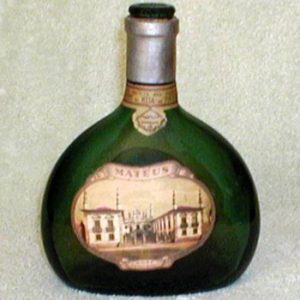 At flux[x] Tom Whitwell has a very interesting read on pricing, and the psychology behind how we make choices when confronted with varying sets of prices. I highly recommend it. He uses examples ranging from newspaper paywalls, Netflix and phone packages, wine, and experimental evidence regarding beer. In short:
At flux[x] Tom Whitwell has a very interesting read on pricing, and the psychology behind how we make choices when confronted with varying sets of prices. I highly recommend it. He uses examples ranging from newspaper paywalls, Netflix and phone packages, wine, and experimental evidence regarding beer. In short:
“Prices are a shortcut to our most sensitive emotional responses.”
Sometimes, yes. But. I think it is important for arts administration practitioners and students to be careful not to see all pricing strategies as ways to mine the depths of consumer emotions for profit. In fact, I think for most cases in the arts, pricing is a lot more straightforward than that. Let me explain.
Consider the examples Whitwell chooses, starting with wine. This is an often used example about how weird pricing is, since anecdotes suggest that sometimes a price increase could raise the amount of sales, as consumers take the higher price as a sign of higher quality. The law of demand seems to fall apart. But the reason wine is used so often in these examples is not because that is generally how pricing works, but rather because it is an exception (and even then only sometimes) to the rule. I buy wine at my local grocery store (for all the things about life in Canada that might be better than in the US, the US wins on this front). At my store, if the prices of oranges or apples, tinned tuna or sardines, crackers or Count Chocula, rise, then the amount demanded will fall as people switch to substitutes. The law of demand works just fine in every aisle of the store except the wine section.
And even there … think about when buying wine is tricky. Generally it occurs when you are buying for someone else (say you are going to a dinner party) and wrestle with what constitutes an appropriate bottle. In this case, as we venture away from the familiar, we might indeed use price as a signal of quality. But for ourselves to drink, a bottle of table wine for the week, we don’t have such angst: trial and error have steered us away from bottles we found were overpriced relative to quality, or that were cheap but not worth it because they turned out to be undrinkable, towards something that for our budget is reasonably priced and not half bad.
Whitwell begins his piece with a discussion of the history of newspaper paywalls, but again that was an unusual situation, as a traditional good underwent a very rapid revolution in technology. Again, likely to be trial and error. But now we are able to fairly rationally decide whether an online subscription to the Wall Street Journal or Financial Times is worth it.
Finally, Whitwell uses some interesting experimental evidence on beer pricing and college students, to show how our rankings of two products are influenced when a third product at a different price is introduced into the mix. But as interesting as the experiment is, it is hypothetical. Students are not asked to consider whether to buy a case of Bell’s Two Hearted Ale or a case of Coors Light, but whether to buy Beer A or Beer B where they are told how consumers have ranked these two beers. But in a real shop we know whether we like Bell’s or Coors, whether the higher price for Bell’s is worth it,* and a case of Molson’s on the shelf does not confuse matters all that much.
So, arts admins: for the most part your customers know what they are in for. They understand what comes with a museum membership versus a single-day admission, and they know the difference between a seat in the balcony and one in the orchestra. This is not, as the saying goes, their first rodeo. I wrote a whole book on arts pricing covering the gamut of pricing strategies – segmented markets, two-part pricing, quantity discounts, quality variation, bundled goods and dynamic pricing – without once assuming consumers are anything but sensible and reasonably well-informed. There’s much to think about in pricing without getting into how consumers might be guided by emotions and impulse, and pricing strategy need not rely on trickery.
–
* it is.

Leave a Reply